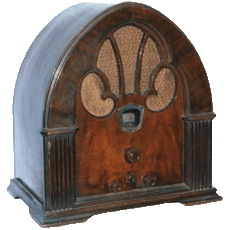03-04-2025, 10:06 AM
Good Morning Everyone.
Yet another brain teaser at hand.
This one is a 1935 version of the 84 closest I can figure from the cabinet it definitely has the changes that can be noted from the service bulletins. My dilemma is that area in the pictures regarding the second detector tube. Looking at it closely you can see where the pins should be connected together one end is lifted if I connect it it buzzes as if you were putting your finger on the grid cap of the tube. If I connect those pins that should be as are my other 84's connected together to ground it immediately buzzes. I have already changed all the capacitors in the blocks and the additional 10MFD filter caps and the resistors that were not within 20% of their stated values. I have checked voltages to both the second detector and the audio tube have check grid bias voltages everything is well within reason. Having it on the veriac The buzz remains the same regardless of the voltage setting. The picture of the resistor laying on the brown paper was attached to those two pins and ground prior to my starting on this repair. I have already substituted several different 77s and 42s. Time for some advice
Thanks to All!
Yet another brain teaser at hand.
This one is a 1935 version of the 84 closest I can figure from the cabinet it definitely has the changes that can be noted from the service bulletins. My dilemma is that area in the pictures regarding the second detector tube. Looking at it closely you can see where the pins should be connected together one end is lifted if I connect it it buzzes as if you were putting your finger on the grid cap of the tube. If I connect those pins that should be as are my other 84's connected together to ground it immediately buzzes. I have already changed all the capacitors in the blocks and the additional 10MFD filter caps and the resistors that were not within 20% of their stated values. I have checked voltages to both the second detector and the audio tube have check grid bias voltages everything is well within reason. Having it on the veriac The buzz remains the same regardless of the voltage setting. The picture of the resistor laying on the brown paper was attached to those two pins and ground prior to my starting on this repair. I have already substituted several different 77s and 42s. Time for some advice
Thanks to All!
Finally after 50 plus years I'm back into the hobby again. It's like trying to relearn a second language some of it makes sense and some of it doesn't! Could be fun now considering my son is now into old radios and tube technology!



![[-] [-]](https://philcoradio.com/phorum/images/bootbb/collapse.png)


